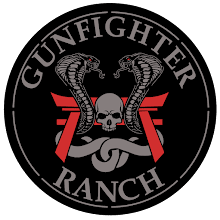Sometime close to 10 p.m. on the night of April 18th, Joseph Warren told William Dawes and Paul Revere that the regulars would soon get into boats and cross to Cambridge from where they would march to Lexington and Concord. The reason for the British to prefer this “water route” to Cambridge was that it would be harder to detect their march. The route through Roxbury went through towns, from which people could spread the alarm that the troops were out. But Gage’s men knew back roads through Cambridge that would allow them to pass unnoticed for much of their route.
Warren feared the regulars would try to capture Adams and Hancock. He wasn’t so worried about the munitions in Concord because he knew the British wouldn’t find any. He wasn’t so sure whether or not they’d find Adams and Hancock.
Dawes left immediately and managed to get by the guards at Boston Neck with whom he had formed a friendly relationship. He rode out through Roxbury and Allston to Cambridge and then on to Lexington. Dawes received little recognition for his work, but Revere (who had been on many missions for the Committee of Correspondence, even as far as Philadelphia) was immortalized in a poem by Henry Wadsworth Longfellow.
Revere tells us about the arrangements he made:
“About ten o’clock, Dr. Warren sent in great haste for me, and begged that I would immediately set off for Lexington where Messrs. Hancock and Adams were, and acquaint them of the movement, and that it was thought they were the objects.”
Dr. Warren wanted Revere to be the last to leave Boston. He asked him to arrange for signal lanterns to be hung from the steeple of Boston’s tallest building, Old North Church. One lantern would signify that the troops were headed for Boston Neck and on from there by land. Two lanterns would mean a water crossing. The lanterns would alert the countryside in case riders like Paul Revere, William Dawes and others were stopped as they tried to spread the alarm from horseback. The lanterns then were really a back-up, but thanks to Longfellow’s (1861) well-read poem, they became symbolic of the event and an easy idea to remember.
Revere had already arranged for Robert Newman to signal his friends in Charlestown, from where other riders would also spread alarms. Then he roused two friends who rowed him to Charlestown in a boat that had been hidden in a marsh by the shore, its oars muffled with cloth so that his rowers could pass in the moonlight and shadows beneath the British ship Somerset and its night watch.
He was landed in Charlestown where he borrowed Brown Beauty, a mare belonging to John Larkin’s father. (Larkin later lived in a house occupied at different times by George Washington and Henry Wadsworth Longfellow.) Revere, on the mare, headed west toward Cambridge. But when he ran into a British patrol he changed his route and headed north through Medford, shaking his pursuers. He did not call out “The British are coming”. Most colonists considered themselves British. He may have told them that the “Regulars” were out or words to that effect.
Paul Revere got through as far as Lexington where he was greeted by the guard outside the door of the house where Hancock and Adams were staying. The man chided him about the noise he was making.
“Noise? You’ll have noise enough before long. The regulars are coming out,” Revere replied. He was able, with some difficulty, to persuade Hancock and Adams to pass up a salmon breakfast and to make their getaway. Hancock, who could be difficult at times, decided that his place was on the battlefield in charge of soldiers. He often viewed himself as some glorious military leader. It was all the persuasive Adams plus the entreaties of Hancock’s sweetheart could do to talk him out the door only minutes before the leading contingent of redcoats reached Lexington Green near the home of Rev. Jonas Clarke, where the two men were ensconced.
Hancock got so involved in searching for a musket with which to arm himself that he left behind a trunk full of important secret papers and had to ask Paul Revere to go back and get them. Revere pulled the trunk out the door and out of sight even as British troops formed on the green. The two refugees made it safely to Woburn and Billerica.
While he was in Lexington, Revere met Captain John Parker, head of the Minutemen of that town. He, of course, informed Parker about the British troops who were headed that way, and Parker passed that information around to his men.
Revere met up with Dawes in Lexington, and then started for Concord. Both riders had met a young man called Dr. Prescott who was returning home after a visit to his girlfriend’s home in Lexington. Prescott joined Revere and Dawes. However, when they reached the town of Lincoln, between Lexington and Concord, the three ran into some of Major Mitchell’s horsemen who were able to corral them in a pasture. Dawes and Revere were cornered, but Prescott was able to scale a wall and gallop on to Concord, warning the townspeople there. Dawes and Revere got away briefly, but other soldiers nabbed Revere and made him dismount. After finding out who he was, they took his horse so he could do more riding and warning. He walked back to Lexington.
On Wednesday morning, April 19, 1775, the vanguard of the British troops under Maj. Pitcairn reached Lexington where they were met by militia at Lexington Green where the grass stood inordinately tall due to the early spring and sunlit days. Parker’s men had been up for hours, but the early morning air had been cold, so they were told to repair to their nearby homes or to Buckman’s Tavern across the green, but to be ready to return at quick notice. Parker had sent scouts down the road toward Boston to learn where the British were, but, unknown to him, these men had been captured. Parker learned of the British approach only when a second scout, sent to find them, spotted the troops coming. The sun had not yet risen when he re-assembled the 38 men who had weapons and, according to tradition, told them: “Stand fast. Don’t fire unless fired upon, but if they mean to have a war, let it begin here.”
The minutemen were not blocking the road to Concord where the British were headed, but, Major Pitcairn ordered his men into a battle line, and turned them so that they were heading directly at the minutemen. He then spurred his horse forward so that he stood between his men and the colonials, and told the minutemen to: “Lay down your arms, you damned rebels, and disperse.” Parker could see that his men were badly outnumbered and told them to break up, which they did. But they took their guns with them. Major Pitcairn said in his official statement that he had told his men not to fire. However, according to his post-battle report to Gage, shots were fired at his men and they returned fire. When that happened it brought fire from the British lines.
It’s unclear who fired first. Jonathan Harrington, a farmer, fell before the British fusillade, looked down at his chest where blood seeped onto his tunic, crawled to the doorstep of his home across the road, and died at the feet of his wife. Eight Americans were killed and the British regulars moved on to Concord, arriving by 10 a.m. But they would have to come back that same way, and the minutemen would be ready with their revenge.
When the British troops got to Concord, they found little in the way of arms or ammunition, but did find a substantial body of armed men waiting for them across the bridge on the Concord River on Barrett’s Farm where they were supposed to find military supplies. The Americans were armed and dangerous and they held the high ground. Had they but known it, the regulars went right by a place where military stores were being hidden even as they marched. A farmer could be seen on a rise, moving along behind his plow. What could not be seen was that his plow was covering over a furrow where supplies had freshly been hidden. But he did not draw the attention of these men who were so intent on following their orders.
The main body of troops remained in town. They did locate a pair of 24-pound cannons at Jones Tavern, which they spiked so that they wouldn’t operate. Some of the troops found minor supplies and made a bonfire. When the regulars started a fire to burn some cannon mounts, having found no cannon, the Americans saw the smoke rising higher than the town buildings, in fact the meetinghouse had caught fire and the soldiers and some citizens were putting it out. But those who were across the river thought they had set fire to the town. They advanced down the hill and across the bridge toward the three companies of British soldiers, killing three and driving the regulars back.
Col. Smith would have been smart to get moving and get his soldiers out of there, but he thought and acted slowly. He had the wounded brought to Wright’s Tavern in town and it was noon before the troops started out. This further delay allowed more American militia to arrive from towns even more distant.
'By the time the British column began its march back to Boston, more than 1,000 militiamen had taken up positions along the winding road to avenge the deaths in Lexington. What followed was a bloody running fight'
The Americans, led by the Lexington militia and Colonel Parker, pursued the British out of town. About a mile out they reached Merriam’s Corner, and it was there that a running battle began with the outlying troops staying concealed behind hills and rises until they were able to get into position to take shots at the British. The marching British were pulling their wounded in the center of their line while those on the outside tried to shoot at the snipers. The marchers were getting much the worst of it.References
This continued back to Lexington where the regulars received temporary respite from reinforcements under Lord Percy whose troops had followed the first wave out of Boston. Percy had brought field pieces with him, and most of the Americans had never been shot at by cannon before. It was a while before their attack regained momentum. But American volunteers kept arriving and they chased the British all the way back to Charlestown, Colonel Smith was wounded in what came to be known as “Parker’s Revenge.” The Americans fired at the British from behind trees and walls and took a toll on the regular soldiers who weren’t used to this type of open-country fighting. The fiercest fighting and the largest number of casualties took place after the troops had left Lexington, in a town called “Menotomy”, now Arlington. (The Battle Road Trail, part of the Minueman National Park runs parallel to Route 2A in Concord, Lincoln and Lexington.)


















No comments:
Post a Comment